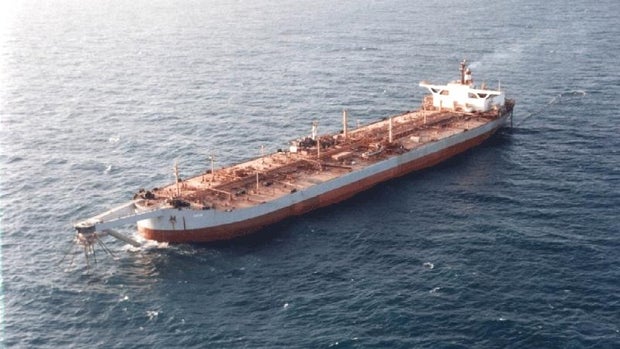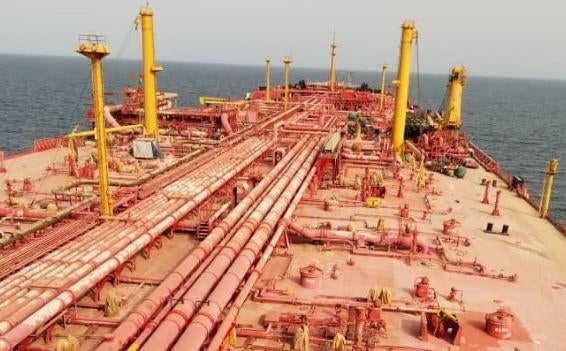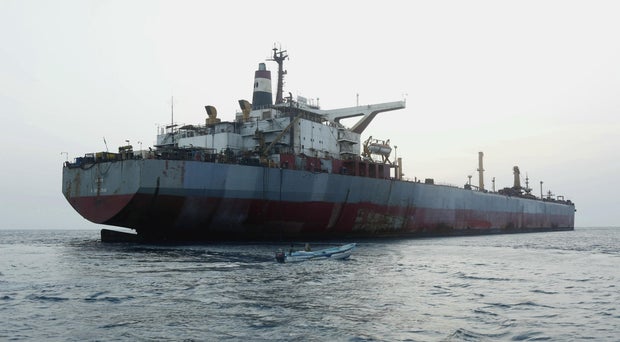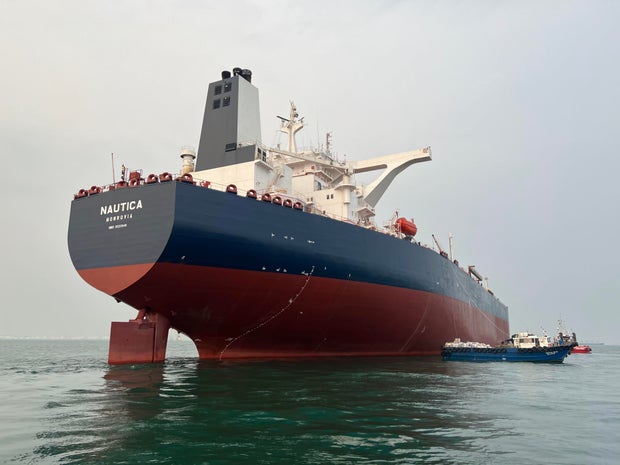Oil from “FSO Safer” supertanker decaying off Yemen’s coast finally being pumped onto another ship
Cairo — An international team began siphoning oil out of a decrepit oil tanker off the coast of Yemen on Tuesday, the United Nations chief said, a crucial step in a complex salvage operation aiming to prevent a potential environmental disaster. For years, many organizations have warned that the neglected vessel, known as FSO Safer, may cause a major oil spill or even explode.
“The ship-to-ship transfer of oil which has started today is the critical next step in avoiding an environmental and humanitarian catastrophe on a colossal scale,” Secretary-General Antonio Guterres said in a statement.
HANDOUT
More than 1.1 million barrels of oil stored in the rusting tanker were being moved to another vessel the U.N. purchased, he said. The oil transfer operation came after months of on-site preparatory work and was scheduled to be completed in less than three weeks, the U.N. said.
The Safter tanker was built in the 1970s and sold to the Yemeni government in the 1980s to store up to 3 million barrels of export oil pumped from fields in Marib, a province in eastern Yemen. The ship is 1,181 feet long with 34 storage tanks.
It is moored 3.7 miles from Yemen’s western Red Sea ports of Hodeida and Ras Issa, a strategic area controlled by the Iranian-backed Houthi rebels who are at war with the internationally recognized government.
HANDOUT
The vessel has not been maintained for eight years, and its structural integrity is compromised, leaving it at risk of breaking up or exploding. Seawater had entered the engine compartment of the tanker, causing damage to the pipes and increasing the risk of sinking, according to internal documents obtained by The Associated Press in June 2020.
For years, the U.N. and other governments as well as environmental groups have warned if an oil spill -or explosion- happens, it could disrupt global commercial shipping through the vital Bab el-Mandeb and Suez Canal routes, causing untold damage to the global economy.
The tanker carries four times as much as the oil that spilled in the 1989 Exxon Valdez disaster off Alaska, one of the world’s worst ecological catastrophes, according to the U.N.
Mohammed Hamoud/Anadolu Agency/Getty
“The potential clean-up bill alone could easily run into the tens of billions of dollars,” Guterres said.
“The hull of the vessel has been deteriorating and one of its pipes has been punctured,” Mohammed al-Hokaimi, founder of the Yemeni environmental campaign group Holm Akhdar (Green Dream) told CBS News in late June 2020. He warned of an “increased risk of crude oil spilling from storage tanks,” and blamed “indifference” on the part of both of Yemen’s warring facitons.
The replacement vessel, now named the Yemen, reached Yemen’s coast earlier this month and the salvage team managed on Saturday to safely berth it alongside the Safer.
UNDP Handout
“The transfer of the oil to the Yemen will prevent the worst case scenario of a catastrophic spill in the Red Sea, but it is not the end of the operation,” said David Gressly, U.N. Humanitarian Coordinator for Yemen, Monday while on board of the salivate vessel, Ndeavor.
After transferring the oil, the Yemen vessel would be connected to an under-sea pipeline that brings oil from the fields, Achim Steiner, administrator of the U.N. development program, told the AP on Sunday.
Steiner said the Safer tanker would be towed away to a scrapyard to be recycled.
For all the latest Automobiles News Click Here
For the latest news and updates, follow us on Google News.





